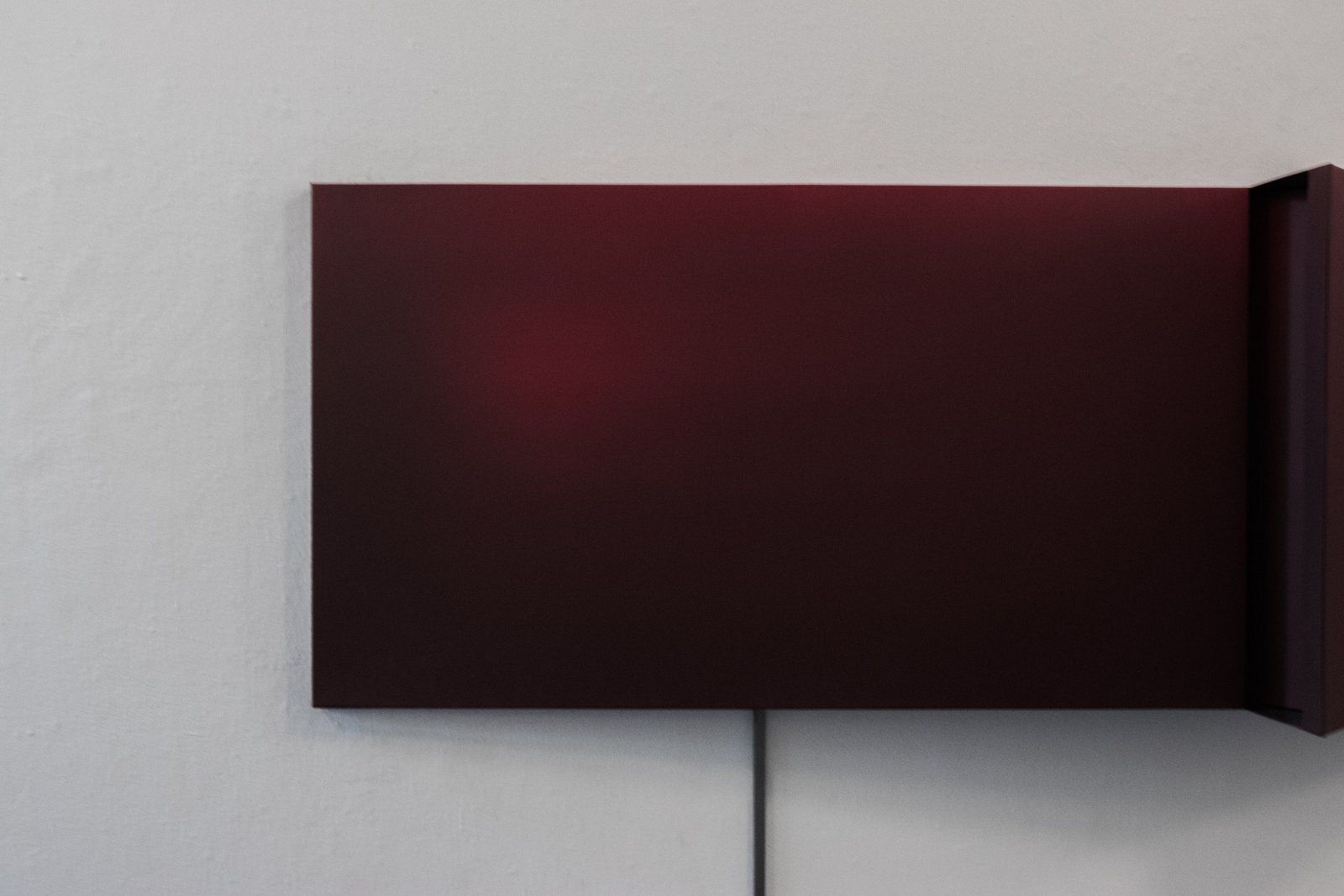
Atmography Air as (spatial) material
Atmography is a research-based installation through which atmospheric parameters- air pressure, wind speed, temperature represent their presence. The perceptible transition of air as a material is a research on how the absence- immaterial can become presence-material in a spatial context. It considers the potentiality of air as a material to build with and its influence this has on the users' behavior in the space.
The exhibition space tempts the audience to construct an understanding of the installation that proposes a perceptible cloud of temperatures radiated by the surface, alluring them with the performing red- air.
A constant movement is created by the interchanging parameters that affect the thermochromic pigments, which results in a visible- transformation of brown to red pigments and non-visible- radiation of heat, creating grades of temperatures in the room gradient.
The perceptible radiation of the heat source in the internal structure is covered with a metal skin, that functions as a conductor of warm air rising to 45 degrees. The rising temperature materializes the color change on the wall surface. The color transformation develops by the interruption of the process toward a state of Thermal equilibrium- a condition in which the whole structure has the same temperature. The disturbance of this process is achieved by the wind source- the ventilator, which results in the maintenance of the heat flow- warm energy transferring to cold.
The research-based installation will be further explored because of the promise of experiments that show similar results of functioning with natural motivated sources- heat panel/sun and ventilator/wind. This suggests to scale up to architectural scale which, are speculations drawn in the process document.
